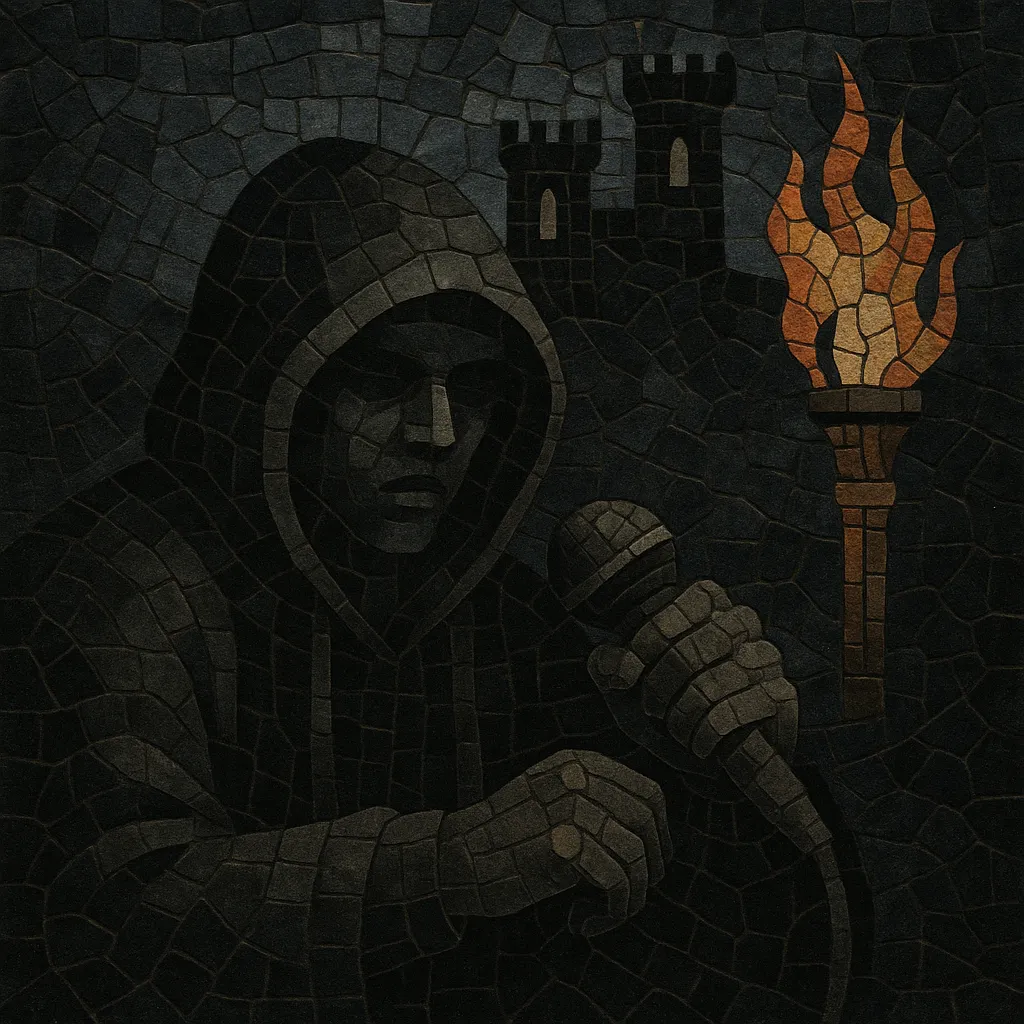
Dungeon rap is a dark, internet-born microgenre that fuses the gloomy, medieval-fantasy atmospheres of dungeon synth with the rhythms, vocal cadences, and low‑end of underground trap and Memphis-influenced rap.
Its sound is defined by lo-fi, reverb-soaked synth pads, organ or choir timbres, modal or minor-key melodies reminiscent of dungeon synth, and skeletal 808-driven drum patterns. Vocals (when present) are typically pitched-down, whispered, or deadpan, often dealing with occult, fantasy, and horror imagery. Producers frequently sample retro RPG soundtracks, black metal-adjacent ambient passages, or cassette-era dungeon synth, then anchor them with trunk-rattling subs and crispy hi-hat rolls.
The genre coalesced online at the turn of the 2020s through Bandcamp/YouTube scenes and boutique labels, crystallizing a distinct aesthetic that feels equal parts crypt-ambient and street-level rap.
Dungeon rap emerged from online communities where dungeon synth collectors and underground rap producers overlapped. By the late 2010s, the lo-fi cassette aura and medievalist melodies of dungeon synth began to mingle with trap’s 808 framework and the eerie, tape-warbled mood of Memphis rap and phonk. Small labels and Bandcamp circles helped codify the sound, with compilations and EPs circulating widely on YouTube and Discord.
Around 2019–2021, the term “dungeon rap” gained currency for projects that foregrounded fantasy/occult imagery, modal and minor-key progressions, and cavernous ambience within a trap template. Visuals leaned into grayscale, rune-like typography, woodcut/retro-fantasy art, and VHS/cassette textures, reinforcing a cohesive identity that felt both nostalgic and contemporary.
Boutique labels and DIY collectives issued compilations that framed the style as a self-contained scene. These releases showcased anonymous or semi-anonymous producers alongside vocal cuts, making room for both instrumental and rapper-led tracks. Bandcamp, YouTube channels, and limited-run tapes were central to circulation, allowing international participation (notably across the UK, Eastern Europe, and North America).
As the sound spread, some artists folded in witch house haze, horrorcore narratives, and cloud-rap spaciousness, while others doubled down on pure dungeon-synth minimalism over sparse 808s. By the mid‑2020s, dungeon rap was firmly recognized as a distinct, internet-native branch of dark rap production, influencing adjacent microgenres and cross-pollinating with darker plugg and sigilkore scenes.

